Tender rose - so sometimes called this flower. Today we learn how to grow and care for Eustoma in the conditions of harsh climate. The plant is very beautiful, gentle, flowers - rich color scheme.
Most often, the EUST is called no other than the "Irish Rose". It is not known when she was brought from an American consortent, but people have long learned to grow eust at home in pots, as well as on the flower beds. Plant is many years, but many lovers of beautiful plants in the conditions of harsh climate grow eustoma as an annual flower.
Features of growing Eustoma in Siberia
Some daches believe that growing a beautiful royal flower on the plot - the task is complicated, some - that everything is very simple. But it is not so simple as I would like, Eustoma is still capricious, requires care and attention.
Plant Perennial - in nature there are wild flowers of different colors. Some Estoma lovers argue that the non-cultivated plant is slightly different from Estoma grown at home. Flowers are small, different colors, several colors can bloom on one stem, externally reminiscent of bells. In everyday life there is another name for this plant: "Blue bell", or "Texas flower". Why blue bell? Because the flowers in shape resemble or wild rose, or the bell. Their color can be different: from white, to pale pink, from light purple, to darker shades of the sky.
Natural shade of Eustoma colors: purple, but now you can meet Estoma with flowers of different shades: pink, white, light violet, gentle yellow and even blue. Everything is the merit of breeders who brought several eustoma varieties by land.
As for the shape of the flower: it is possible for a long time to argue, because Estoma resembles a rose, and the bell at the same time. If the flower is open, then it resembles a rose, and if he has not yet managed to open, then the bouton looks like a bell.
Leaves at the plant a little unusual coloring - they are green with a purple tint. The wax texture, the shade of the leaves is more matte, although there are plants with glossy leaves. Eustoma flowers are very pleasant to the touch, resemble satin fabric.
Estoma in Siberia. Growing
If you want Estoma in July on the flower bed, then the seeds need to sow at the end of autumn.
The order of sowing Estoma to seedlings in Siberia:
- Preparing containers for cultivation - this work must be done in advance, then in the given sequence to sow seeds of colors. For cultivation, you need to purchase a special mixture enriched with nutrients. Nitrogen in it should be minimum, acidity is neutral. If you doubt what a mixture for sowing seeds to purchase, stop your choice on the finished soil for the cultivation of violets.
- Before sowing seeds, the soil must be moistened.
- How to plant seeds correctly: lay out on the surface, slightly pressed into the ground, literally by 2-3 mm.
- Immediately after landing, the pot with seeds must be covered with a film to create a greenhouse effect. Carrying is carried out once a week.
- To speed up the process of seeding, containers with planting material are placed in a well-lit warm place. It can be a windowsill or a specially equipped table. The room temperature should be from 20 to 25 degrees.
- As soon as the first seedlings appear (if all the conditions are observed, then the shoots should be expected in 2 weeks), the container with plants must be installed on a well-lit place. If the light is not enough, and it will be, because in the period from the beginning of December until the end of February, natural light is always at least, so it is necessary to provide a shower.
- As soon as a full-fledged second leaf appears, the seedlings need to transplant (sample) into small separate containers. Small pots are suitable, diameter 5 cm. In each such pot can be planted at once 3 seedlings.
- Seedling is plugged, the first 2 leaves can be covered with the earth.
- Immediately after the transplantation and until the plant takes place, it is necessary to provide a full-fledged watering, and then - spraying. To ensure comfortable conditions for the growth of eustomas, the tank can be covered with a film (create greenhouse conditions).
- As soon as the light day starts to increase, in early March, the seedlings must be transplant to more spacious pots (diameter 7-8 cm). Naturally, it is necessary to put drainage on the bottom.
- The last transplant is the most responsible task, because it is necessary to transplant the Eusta very carefully, since the root plant of the plant is very gentle and sensitive.
- If you are afraid that the transplantation fails to do carefully, you can neatly roll out of a smaller pot of the plant along with the ground, into a large container.
- Creating optimal conditions for growing eustomas, plants can feel great until the time when it is necessary to plant a drum on the flower beds.
- In order for the plant well to develop, it is necessary to provide optimal temperature and illumination. Watering is moderate when the top layer gets free.
Eustoma. Landing and care in Siberia
When seedlings are strengthened, you can start landing for eustoma. In Siberia, in the conditions of harsh climate, it is very difficult to grow a full-fledged plant. Eustoma reacts as a decrease in temperature (and does not tolerate low temperature at all) and on strong sun. Does not like Eustoma moistening soil, but if moisture is not enough, then the plant can perish.
That is why it is necessary to take into account all these nuances when landing Estoma in Siberia, observing such rules:
- choosing a place to land seedlings, a plot is suitable for drafts, with multiple lighting, moderate soil humidity;
- the landing time will depend on the region and weather conditions. Never sit down, if there is a possibility of return freezers. Therefore, the best time for planting plants: Starting from mid-May + 2 weeks (every region has its own time);
- so that the plants have taken root, planting the hardened seedlings are preferably on a cloudy day or when the sun began to sit down;
- the root system of Estoma is very sensitive, so seedlings need to be carefully transferred from the pots directly to the prepared soil (make a deepening, plenty of pouring);
- the distance between the plants is necessarily, within 15 cm, if there is little space, then it is 10 cm. Eustoma grows with a bustard, well grows, so plants can interfere with each other and develop normally;
- in the first 3 weeks after landing, plants are necessarily covered with a film. You can accommodate plastic bottles, then for each seedling you need to highlight a spacious plastic bottle. A greenhouse effect is created, the plant feels safe, comes up and subsequently develops well.
Growing Eustoma in Siberia. Care
According to the reviews of the growing Eustoma in Siberia, it can be concluded that if you ensure proper care and watering, then difficulties, as a rule, does not occur.
Now let's get acquainted with the advice from professionals:
- In order for the plants to be well felt, moderate watering is important, regularity is no less important. As soon as they saw that the top layer of the soil began to push, it's time to water the eust. There is enough humidification of the soil literally by 2-3 cm.
- Making a nutrient mixture is required. It can be a korlard or bird litter, which needs to be divorced by water in proportions 1 to 10. The first feeding 20 days after the seedling landing, then every month. Extra-corner feeding is allowed only in a smaller concentration.
- To ensure active branching, it is necessary to stop the growth of Estoma. For this, the top pinch after the plant will acquire the first 8 leaves.
- Blossoms need to be expected at the end of July or in August. Duration of flowering will depend not only on landing time, but also from the region.
- Long bloom, literally until late autumn. Buds bloom consistently, and on the site of dried flowers almost immediately new boutons appear. If the weather is favorable, then bloom can be long and will stop only after the onset of frosts (up to -10 degrees).
- If Estoma flies early, then blooming to the end of the summer can end. To restore this ability, dry stalks need to be cut, leaving each of 1 to 3 intercosals. If the weather is favorable, then after 4-6 weeks, Estoma will again delight beautiful blossoms.
- Later, the flowering of Estoma is not a reason to be upset, because the flower can be digging up before the cold will come. The plant needs to be simply transferred to the pot of suitable size, leave on the balcony (glazed).
- When the flowers get dry, the plant is cut off (only stems), the pot put in a cool place, watering - minimize. Only spraying is allowed, live cuts do not hurry to throw away, they can be saved until the next spring, if you provide the optimal temperature regime (up to +10 degrees).

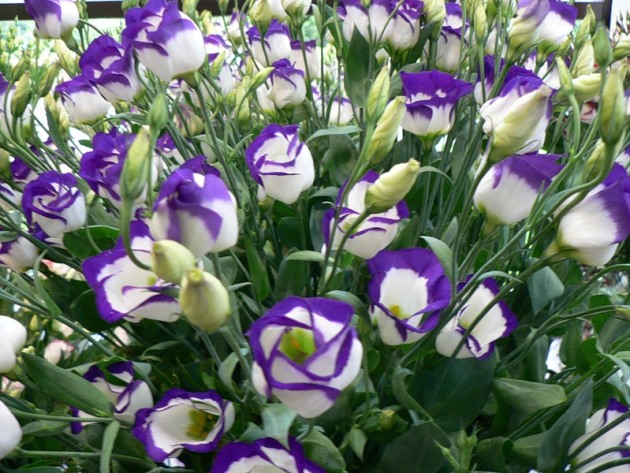
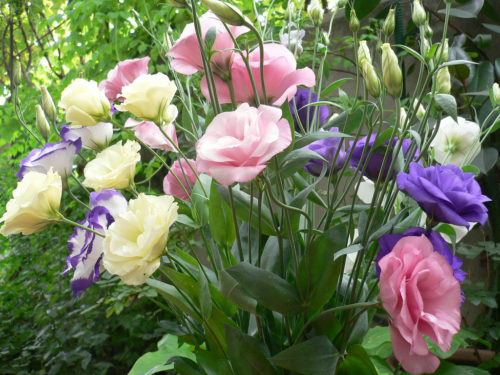
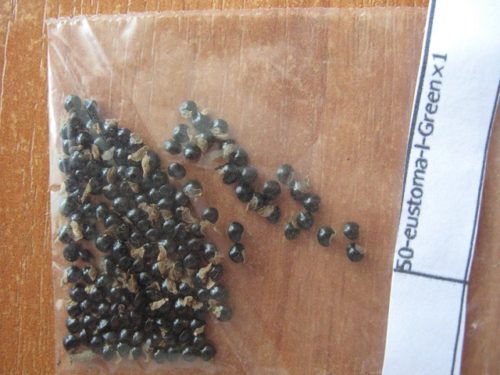

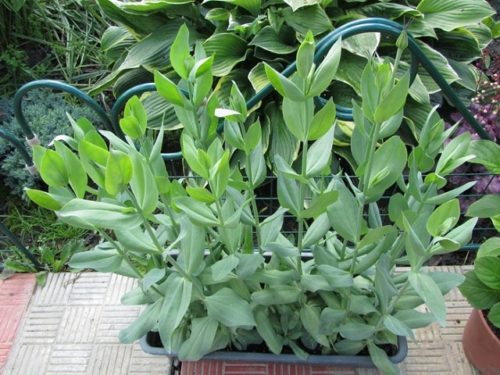
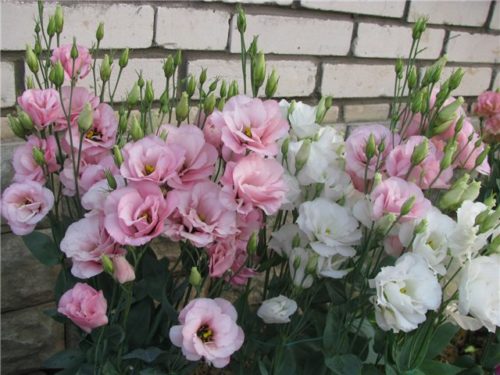












 Start a discussion ...
Start a discussion ...